When Kazakhstan switched to the national currency, this was the beginning of the development of the state banking system. The monetary unit of this country is one of the most stable currencies in the post-Soviet space at the moment.
Kazakhstan Currency Name History
The Kazakhstan tenge got its name not by chance. This is the Turkic name for money, which used to be issued in the form of silver coins. The national Kazakhstani currency was created in a short time - in just a year. There was a lot of controversy around the name of the money, but in the end "tenge" was chosen.
History of paper national currency
The Kazakhstani tenge was created in a secret setting, reminiscent of a secret military operation. The development involved four artists. The first series of currencies was created manually using watercolor paints, pencils and tempera. Next, the thumbnail designs were sent to England. Harrison and Sons took up their release. This work brought typography a celebrity and a royal Golden Badge. 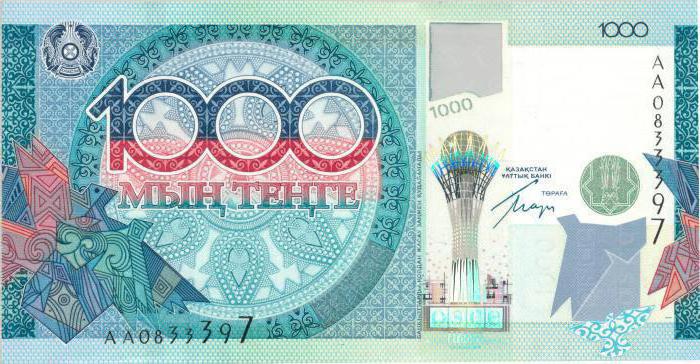
A printed batch of notes was delivered to Uralsk within a month, by air. Their flights also went under the stamp of secrecy. For eight days, the money was transported to the banks of Kazakhstan. 12/12/1993, the decree of Nazarbayev in the Republic of Kazakhstan introduced the national currency. On November 15, the exchange of old money for new ones began. In 1993, the maximum rate of the Kazakhstan tenge to the ruble was 1: 260.
History of the national currency in the form of coins
Tiyn is a bargaining unit of Kazakhstan. It was equal to one hundredth of tenge. The first coins were struck with dignity:
- 2;
- 5;
- 10;
- 20;
- 50.
Since 2001, they began to be withdrawn from circulation. The first Kazakhstani coins were minted in Germany from brass and nickel silver. Anniversary and commemorative copies appeared. In 1996, gold coins were minted in denominations of:
- 1000;
- 2500;
- 5000;
- 10000.
The first five silver jubilee coins in 100 tenge appeared on the 150th anniversary of Abay Kunanbayev. All commemorative and jubilee banknotes are issued only in a limited edition and are sold at a collection value. 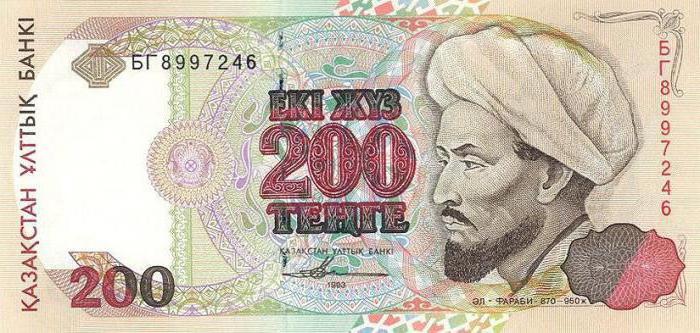
Denominations
The first paper denominations existed from 1 to 100 tenge. Beginning in 1995, the printing of banknotes in denominations of 1000 began, in a year - 2000. During this period, the Kazakhstan tenge to the ruble significantly increased and amounted to a maximum of 1:86. A bill in 5000 tenge appeared only in 1998. Since 2007, old samples have gone out of circulation. In 2006, banknotes of a new series appeared (from 200 to 10,000 tenge).
They were designed for a decade of solvency. Then people were given another year in exchange for new bills. A banknote of “1” value was withdrawn from circulation in July 2006. Tiin (coins) were minted in denominations of 1 to 50. In 2001, the process of withdrawing this type of currency from circulation was launched.
Tenge Description
The Kazakhstan tenge has its own symbol in the form of an uppercase letter “T”, above which is a horizontal line above. This symbolizes the reliability and stability of the currency. The letter itself is the starting one from the name of the currency. The first banknote designs used images of people who made a great contribution to the history of Kazakhstan. 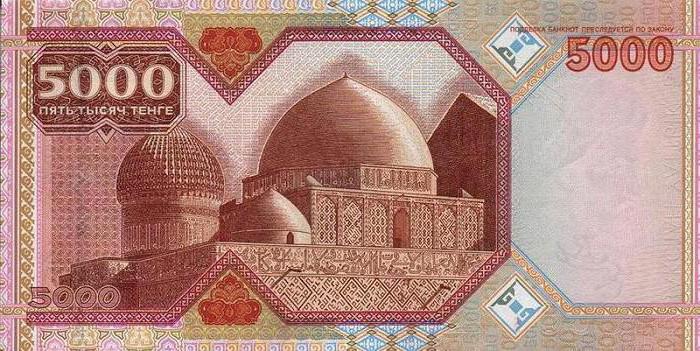
On the back of the bills, the natural landscapes of the republic and its architectural monuments were drawn. A proposal was made to depict Nazarbayev on banknotes, but the president refused this project.
Tenge Protection
Despite the tight deadlines for developing the tenge, this currency has the highest level of protection. As a result, the national money of Kazakhstan is almost impossible to fake. Note paper was originally ordered in England, and ink in Switzerland. Kazakhstan tenge has many degrees of protection:
- water marks;
- security threads;
- transparent window;
- overlapping images;
- golden intaglio;
- label for visually impaired people;
- optically variable paint;
- anti-copy element;
- micro fonts;
- serial numbers;
- iridiscent strip;
- hidden images;
- iris print;
- UV protection
- fibers included in the paper.
Among the most reliable and modern stand out:
- Iridiscent strip. A drawing appears on it when the bill turns sideways.
- Microtext. It is clearly visible under strong magnification.
- Color changing paint. It is applied on banknotes in denominations from 5000 to 20,000 tenge.
- Iris print. Colors move from one to another progressively, softly.
- Pink fibers. Change their color under the influence of ultraviolet light.
- Anti-copy element. When you try to fake a bill, the rasterized mesh is distorted.
- Golden Intaglio. It makes it difficult to copy banknotes, as this is prevented by a dense layer of prominent paint.
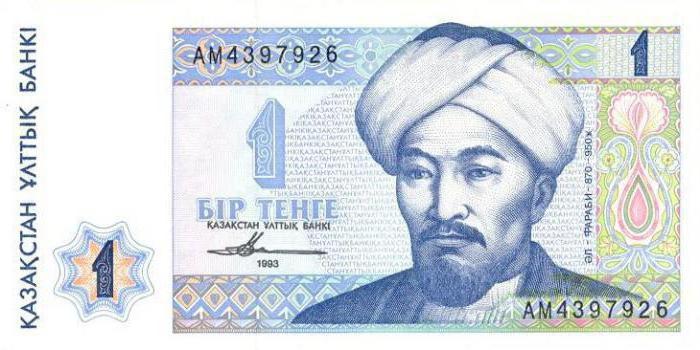
All of the above security measures are completely justified. As soon as the national currency appeared in Kazakhstan, there were many who wanted to fake it. As a result, the protection of banknotes and coins was constantly refined and improved.
History of tenge courses
Initially, a two-stage transition to the national currency was supposed. It was planned to introduce temporary bills, and then replace them with permanent ones. But as a result, the government of Kazakhstan decided to arrange a monetary “coup” in one fell swoop.
The Kazakhstan tenge has been constantly changing. In April 1999, the national currency against the US dollar fell and amounted to 160: 1 (previously it was 88: 1). Then followed a long period when the tenge was at the level of 130-135 to the dollar.
In February 2009, the dollar rose. As a result, the tenge to him became 1: 170. Then it fell again and froze at around 150. In 2014, one dollar was equal to 188 tenge. The following year, the national currency of Kazakhstan lost 26 percent of its value. 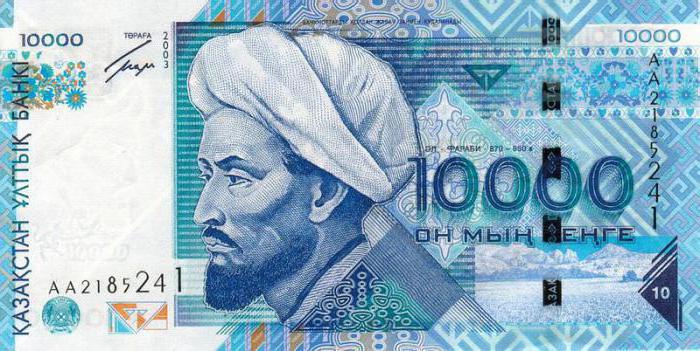
At the beginning of 2016, one US dollar was worth 370 tenge. And since then the rate has been gradually increasing. In 2017, the Russian ruble / Kazakhstan tenge rate is 1: 5.48.
Exchange rate information is very important for entrepreneurs. For example, the slightest changes between the Russian and Kazakh currencies affect the cost of products and goods coming from the Russian Federation to the Republic of Kazakhstan. With large export volumes, prices will decline, with small export volumes they will increase.